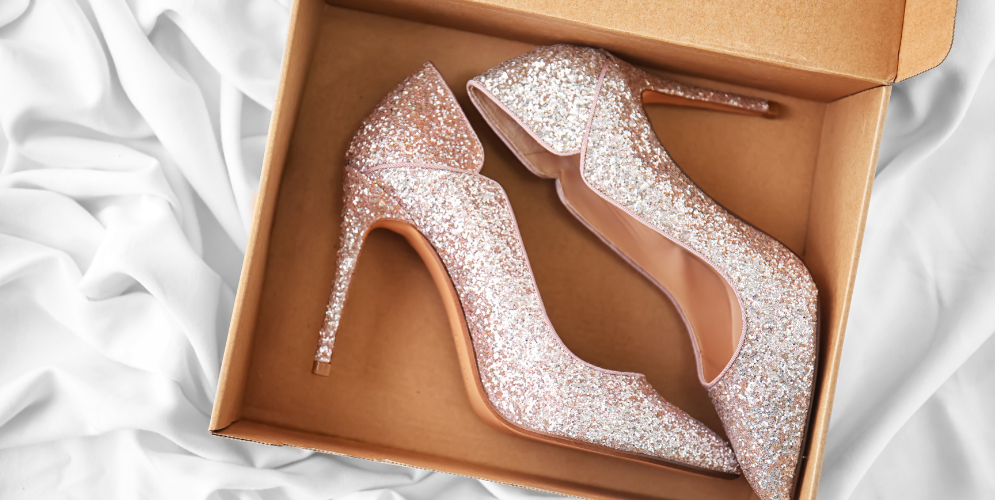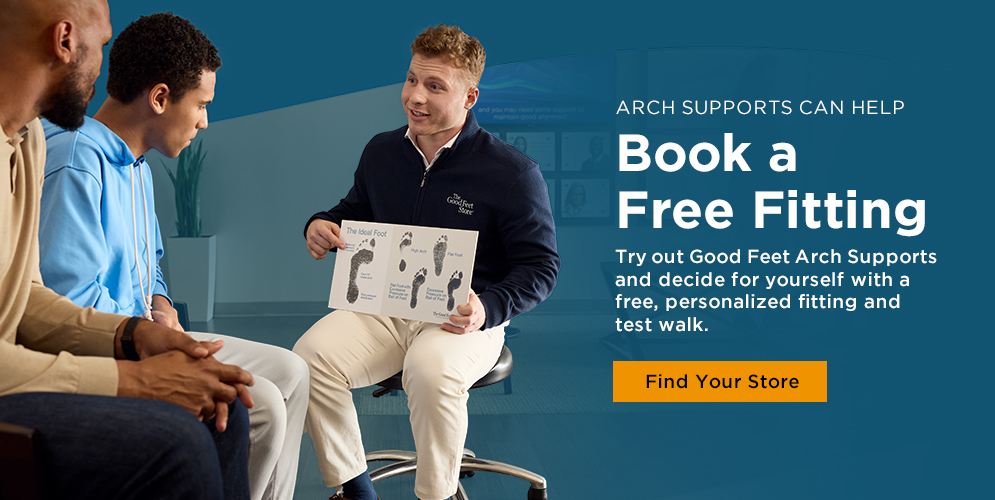What Pain in the Arch of Your Foot Means (And What You Can Do About It)
What Pain in the Arch of Your Foot Means (And What You Can Do About It)
"Oh, my aching feet." Some people say this after a long day of walking or standing. While they're uncomfortable now, they know that after resting their feet and perhaps a nice warm bath, the discomfort will dissolve.
Not so with arch pain. About half of all cases of foot pain are disabling, and much of this pain takes place in the foot's arch area.
What Pain in the Arch of Your Foot Means?
Your most visible arch, the Inner Longitudinal Arch, is a vital part of your foot, stretching from your heel to the base of your toes. This arch:
- Acts as a shock absorber
- Helps to balance and stabilize your feet as you walk
- Adapts to changing terrain (think mountain hikes versus flat sidewalks)
- Bears the weight of your entire body
If you injure any part of the complex network of muscles, ligaments, tendons, and bones that comprise this arch – or put excess stress on your feet through overuse, for example – you can experience arch pain.
Arch pain can feel like tightness, pulling, or a burning sensation on the bottom of your foot, typically in the ball and heel of the foot. However, since the proper functioning of your ankles, knees, hips, and back all rely on healthy feet, you might feel pain anywhere up the kinetic chain.

Causes of Foot Arch Pain
Your foot is comprised of more than 100 ligaments, tendons, and muscles, but did you know you have four arches in your foot?
- Inner Longitudinal Arch: runs from the ball of your foot to the heel, and controls excessive pronation or supination
- Outer Longitudinal Arch: absorbs the "roll" of your foot as you walk, reducing stress on your knees, hips, and ankles
- Transverse Arch: located above your heel, improving balance and increasing stability
- Metatarsal Arch: spread across the ball of the foot, improving balance and relieving pressure on the forefoot.
An injury, overuse, or structural issue can cause foot arch pain, and may be aggravated due to aging, stress, weight gain, or neurological conditions such as Morton's Neuroma, an inflamed nerve in the ball of the foot.
Plantar Fasciitis
Plantar fasciitis is inflammation of the fascia, a thin sheath of fibrous tissue that runs along the bottom of your foot from the heel to each of your toes. The suffix "-itis" refers to inflammation.
This common cause of foot arch pain affects one in ten adults, so it may be some small comfort to know you're not alone.
Plantar fasciitis risk is higher for women, for people 40 to 60 years old, and for those who:
- Carry excess weight
- Stand for many hours a day
- Wear worn-out shoes or high heels
You're also at increased risk of plantar fasciitis arch pain if you have:
- Flat feet or high arches
- Tight Achilles tendons, or "heel cords"
- An unusual walk, such as overpronation
Flat Feet
Flat feet are feet that lack a normal arch, causing the entire foot to touch the floor when you're standing. While the condition is common in children whose bodies are still developing, if flat feet remain into adulthood, they can lead to arch pain.
According to a national foot health assessment conducted for the Institute for Preventive Foot Health, 8 percent of American adults 21 years of age and older have flat feet. An additional four percent have fallen arches, which are normal arches that weaken or "fall" over time due to tendon damage.
You're at greater risk of flat feet if you are:
- Highly athletic
- Prone to falls
- Overweight
- Diagnosed with a chronic condition such as hypertension, arthritis, or diabetes.
Adults can also become flat-footed even if they previously had a normal arch. This condition, known as adult acquired flatfoot, is common in women over 40. Pregnancy also increases the risk of developing adult-acquired flatfeet.
Overpronation
When you're “on a roll”, it means you're experiencing a prolonged period of success. The same is true for feet that are functioning in a normal, healthy manner: they pronate, or roll inward, when you take a step. This is part of the complex biomechanics of motion that make our feet such marvels of engineering.
However, when your feet roll excessively – that is, overpronate – it can become painful. If your foot bones roll inward too much, you can end up with flat arches, and arch pain when walking.
Overpronators are susceptible to stress injuries such as:
- Shin splints
- Runner's knee
- Stress fractures
- Plantar fasciitis
- Achilles tendinitis
High Arches
If flat feet are a health challenge, it might seem that high arches would be ideal. But as with overpronation, too much of a good thing is just as much of a challenge as too little.
High arches tend to be a structural issue. And high arches may be quite painful, because of the stress on the metatarsals (the bones just behind the toes). If you have high arches, you also know how difficult it can be to find shoes that fit well.
People with high arches are prime candidates for arch supports, which are designed to relieve pain, provide balance and comfort – and, especially in the case of high arches, prevent possible disability.
Unsupportive Shoes
Fashionable footwear – particularly women's footwear – can be uncomfortable. It often seems the more stylish the shoe, the less supportive it is for the foot. Women wedge their feet into pointy shoes that pinch their toes, or choose elegant boots with no arch support, and can suffer excruciating pain in the foot arch as a result.
Dr. Alyssa Dufour, PhD, led a study at the Institute for Aging Research of Hebrew SeniorLife, which found that wearing unsupportive shoes such as high heels, slippers, and sandals can cause both heel and ankle pain.
Of course, it's natural to want to look your best, particularly at work and on special occasions. You may think wearing flip-flops or going barefoot at home is a good way to counterbalance unsupportive footwear the rest of the time – but these alternatives can make arch pain worse.
This doesn't mean you need to wear sneakers or unattractive shoes to protect your feet, however. The solution is surprisingly simple: arch supports. Arch supports help place your feet in their ideal position, distributing pressure evenly across your foot and aligning your body up the kinetic chain.
With the right kind of arch supports inside your shoes, you can eliminate arch pain when walking. After all, a fashion-forward woman (or man) typically has a few little secrets tucked away that help them look good. Arch supports can be yours.

Injury or Overuse
Sometimes foot arch pain occurs because you've overdone it. Overuse can lead to injuries such as strains, sprains, and even hairline bone fractures if you push your body beyond its limits.
Maybe you're training for a marathon and exercised too long, or were wearing worn-out athletic shoes. Overuse can cause muscle and tendon fatigue, which lead to arch pain. Overuse injuries are also more common as we get older, since our bodies can't adapt and recover as quickly as they did when we were younger.
An injury can also happen suddenly, if you step off a curb in a way that twists the arch of your foot, for example, or slip on a wet surface.
Whatever the reason, to avoid overuse, injuries, and arch pain, aim to:
- Wear supportive shoes that offer good arch support
- Wear arch supports to keep your feet in their ideal position
- Pace yourself: increase your activity level gradually
- Cross-train: vary the types of exercise you do each day, and incorporate low-impact exercise such as walking or swimming to use different muscle groups, which will help prevent overuse injuries
Signs You Should See A Doctor
Home remedies such as the classic R-I-C-E (rest, ice, compress, elevate) may suffice for minor foot pain. If this doesn't resolve the problem, you may need to see a doctor.
Schedule an office visit if you:
- Have constant, burning arch pain, numbness, or tingling, involving your foot
- Have swelling that doesn't improve after two to five days of home treatment
- Have persistent foot pain that doesn't improve after several days
- Seek immediate medical attention if you:
- Have an open wound
- Have signs of infection, such as redness, warmth and tenderness in the affected area, or if you have a fever over 100º F (37.8º C)
- Are unable to walk or put weight on your foot
- Have diabetes and have a wound that isn't healing or is deep, red, swollen, or warm to the touch
Ways to Prevent Arch Pain
The best way to prevent arch pain is to love your feet! Recognize them as the foundation of a healthy body, and do something special for them on a regular basis — such as a foot massage, or an Epsom salt soak. Your feet will appreciate the TLC.
On a day-to-day basis, you can avoid arch pain by taking smart steps to maintain healthy feet:
- Wear shoes in good condition that have arch support
- Invest in arch support insoles that are designed to support all four arches of the foot
- Stretch before and after exercise to relieve tightness and help relax your arches
- Don't exercise with an injury! Allow time to heal.

Try Personally Fit Arch Supports
Once your doctor has given you the “all clear” on any specific foot health issue, try personally fitted arch supports to keep your soles in superb shape going forward.
Good Feet Arch Supports are distinctly different from insoles you can buy off the rack at a pharmacy. They're personally fit to your specific needs by a Good Feet Arch Support Specialist. During your Free Fitting and Test Walk, a trained Good Feet Arch Support Specialist will spend up to an hour getting to know you and your feet. They'll ask about your lifestyle and activities, work environment, and the type of footwear you prefer.
You can walk around the store for as long as you like to get a sense of which arch supports feel the best. This try-before-you-buy approach is one of the hallmarks of our precision fit.
If you decide to buy Good Feet Arch Supports, you can wear them home the same day.
Stop into any of our 200 stores nationwide whenever it's convenient for you, or make an appointment. The choice is yours. We look forward to helping you maintain healthy, strong arches.